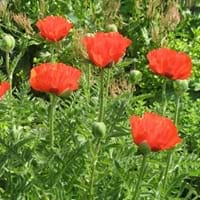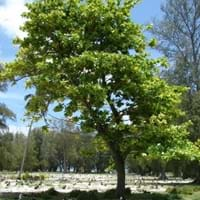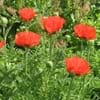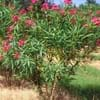Life Span
Perennial
Perennial
Type
Flowering Plants
Fruit, Perennial, Tree
Origin
Hybrid origin, Western Asia
Africa, Asia, Australia
Types
Not Available
Not Available
Habitat
gardens, Grassland, Roadsides, tropical environments
Subtropical climates, Tropical areas
USDA Hardiness Zone
3-9
Not Available
AHS Heat Zone
9-1
Not Available
Sunset Zone
A1, A2, A3, 1a, 1b, 2a, 2b, 3a, 3b, 4, 5, 6, 7, 8, 9, 10, 11, 14, 15, 16, 17, 18, 19, 20, 21
Not Available
Habit
Clump-Forming
Spreading
Flower Color
White, Red, Orange, Pink, Salmon, Coral, Lavender, Orange Red, Dark Salmon, Black
Non Flowering Plant
Flower Color Modifier
Bicolor
Not Available
Fruit Color
Not Available
Dark Brown, Green
Leaf Color in Spring
Green, Gray Green, Dark Green
Dark Green
Leaf Color in Summer
Not Available
Green
Leaf Color in Fall
Green, Gray Green, Dark Green
Red
Leaf Color in Winter
Not Available
Red
Leaf Shape
Egg-shaped
Broadly Ovate
Plant Season
Spring, Summer
Summer
Sunlight
Full Sun, Partial Sun
Full Sun, Partial Sun
The pH of Soil
Acidic, Neutral, Alkaline
Acidic, Neutral
Soil Drainage
Well drained
Well drained
Bloom Time
Late Spring, Early Summer
Summer
Tolerances
Not Available
Dry soil
Where to Plant?
Container, Ground, Pot
Container, Ground
How to Plant?
Seedlings
Seedlings, Stem Planting
Plant Maintenance
Medium
Low
Watering Requirements
Form a Soil ring to water efficiently, Requires consistently moist soil, Requires regular watering, Water Deeply
Needs less watering
In Summer
Lots of watering
Ample Water
In Spring
Moderate
Moderate
In Winter
Average Water
Average Water
Soil pH
Acidic, Neutral, Alkaline
Acidic, Neutral
Soil Drainage Capacity
Well drained
Well drained
Sun Exposure
Full Sun, Partial Sun
Full Sun, Partial Sun
Pruning
Remove damaged leaves, Remove dead branches, Remove dead leaves
Remove dead branches, Remove dead leaves
Fertilizers
All-Purpose Liquid Fertilizer
All-Purpose Liquid Fertilizer
Pests and Diseases
Red blotch
Not Available
Plant Tolerance
Drought
Dry soil
Flower Petal Number
Single, Double, Semi-Double
Not Available
Foliage Texture
Medium
Fine
Foliage Sheen
Matte
Glossy
Attracts
Not Available
Birds
Allergy
Skin irritation
Asthma
Aesthetic Uses
Showy Purposes
Showy Purposes
Beauty Benefits
Not Available
Making cosmetics
Environmental Uses
Air purification
Air purification, Food for birds
Medicinal Uses
Not Available
Energy, Minerals, ß-carotene, Vitamin A, Vitamin C, Vitamin E
Part of Plant Used
Whole plant
Fruits
Other Uses
Culinary use, Employed in herbal medicine, Showy Purposes, Used as Ornamental plant
Grown for shade, Used As Food
Used As Indoor Plant
Yes
No
Used As Outdoor Plant
Yes
Yes
Garden Design
Cutflower, Feature Plant, Mixed Border
Edible, Fruit Tree
Botanical Name
PAPAVER orientale
Terminalia catappa
Common Name
Oriental Poppy
Bengal almond, country almond, false kamani, Indian almond, Malabar almond, sea almond, tropical almond
In Hindi
ओरिएंटल पोस्ता
जंगली बादाम
In German
Türkischer Mohn
Katappenbaum, Seemandelbaum, Indische Mandel
In French
Poppy Oriental
Badamier
In Spanish
amapola oriental
almendro malabar, almendro de los trópicos, almendrón, falso kamani, Egombegombe
In Greek
Oriental παπαρούνας
Ινδικό αμύγδαλο
In Portuguese
Poppy Oriental
amêndoa, amendoeira, castanheira, anoz, árvore-de-anoz, castanholeira, coração-de-nego, castanhola, sete-copas, chapéu-de-sol, guarda-sol, terminália, figueira-da-índia
In Polish
Oriental Poppy
Migdałecznik właściwy
In Latin
Oriental Poppy
inti almont
Phylum
Magnoliophyta
Magnoliophyta
Class
Magnoliopsida
Magnoliopsida
Order
Ranunculales
Myrtales
Family
Papaveraceae
Combretaceae
Clade
Angiosperms, Eudicots
Angiosperms, Eudicots, Rosids
Tribe
Not Available
Not Available
Subfamily
Paperveroideae
Not Available
Season and Care of Oriental Poppy and Indian Almond
Season and care of Oriental Poppy and Indian Almond is important to know. While considering everything about Oriental Poppy and Indian Almond Care, growing season is an essential factor. Oriental Poppy season is Spring and Summer and Indian Almond season is Spring and Summer. The type of soil for Oriental Poppy is Loam and for Indian Almond is Loam while the PH of soil for Oriental Poppy is Acidic, Neutral, Alkaline and for Indian Almond is Acidic, Neutral.
Oriental Poppy and Indian Almond Physical Information
Oriental Poppy and Indian Almond physical information is very important for comparison. Oriental Poppy height is 45.70 cm and width 61.00 cm whereas Indian Almond height is 500.00 cm and width 600.00 cm. The color specification of Oriental Poppy and Indian Almond are as follows:
Oriental Poppy flower color: White, Red, Orange, Pink, Salmon, Coral, Lavender, Orange Red, Dark Salmon and Black
Oriental Poppy leaf color: Green, Gray Green and Dark Green
Indian Almond flower color: Non Flowering Plant
- Indian Almond leaf color: Dark Green
Care of Oriental Poppy and Indian Almond
Care of Oriental Poppy and Indian Almond include pruning, fertilizers, watering etc. Oriental Poppy pruning is done Remove damaged leaves, Remove dead branches and Remove dead leaves and Indian Almond pruning is done Remove dead branches and Remove dead leaves. In summer Oriental Poppy needs Lots of watering and in winter, it needs Average Water. Whereas, in summer Indian Almond needs Ample Water and in winter, it needs Average Water.





